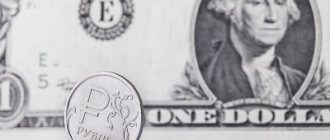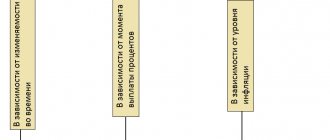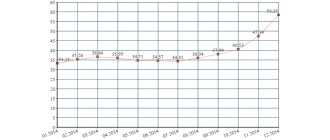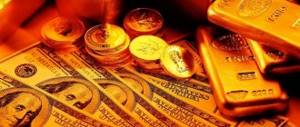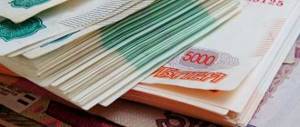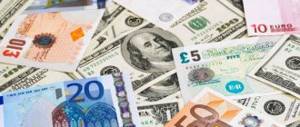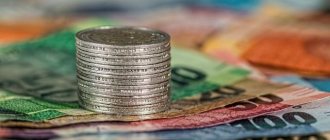Almost everyone anywhere in the world is interested in the dollar exchange rate, since the state of the world economy and the dynamics of other currencies largely depend on this currency. It is typical that during the economic crisis, there is an upward trend in the American currency, while at the same time the value of domestic assets decreases. For this reason, many people purchase this currency. Without knowing how the exchange rate is formed, dollars are purchased by the population at the peak of their value and sold at the minimum price value. To correctly assess the prospects for the exchange rate, you need to know what the dollar exchange rate depends on.
What is the exchange rate?
The term currency comes from the Italian word valuta, meaning money. Currency refers to the monetary units of individual countries, units of account of other countries and international units of account (dollar, euro, British pound).
The exchange rate is the ratio between two currencies, that is, the amount that you need to pay with one money to get the other. The exchange rate is necessary for the global economy at purchasing power parity. This means that the same product should cost the same amount of money in different currencies. Therefore, for example, a smartphone for 12,000 rubles at a ruble to dollar exchange rate of 60:1 will cost $200.
Relevant! Carry Trade Strategy
Large market participants prefer to use reliable, albeit not always highly profitable, strategies to preserve capital. One of such strategies is Carry Trade. Its essence is to borrow money in a country where the interest rate is low (since the interest rate on loans is low there).
And now there are countries with zero (eurozone) or even negative interest rates (Japan, Switzerland). And put this money on deposit in a country where the refinancing rate is high, since the interest on the deposit is high there. In this case, the investor's profit is the difference between the high and low interest rates.
The US dollar combines the benefits of the refinancing rate (1.75%) and the reliability of the currency. Therefore, the dollar is in demand for the Carry Trade strategy. And, as you remember, as demand increases, so does the price.
Good to know:
Do you want to make money in the financial markets without trading? Then TIMA service from Gerchik & Co is for you! Find out more
What an investor needs to know about the TIMA service you will find out below.
Why are the dollar and euro world currencies?
World or global is a currency that is used in most international payment transactions. At the moment, the dominant global currencies are the euro and the US dollar. The influence of these two monetary units is so great that some countries tie the exchange rate of their money to them (Panama, El Salvador, Ecuador) or even abandon their national currency, switching to the dollar.
As a result of the unification of European countries into a common economic space, the euro strengthened significantly, replacing the dominance of the American dollar by the beginning of the 21st century. The euro inherited its reserve status from the German mark.
According to rough estimates, at the moment the world's foreign exchange reserves consist of a quarter of euros, and two-thirds of dollars. The remaining share comes from the British pound, Japanese yen and Swiss franc.
What does the exchange rate in Russia depend on and why does the ruble show weak positions?
To answer this question as briefly as possible, because the Russian economy does not show growth relative to the European Union and the United States. The reasons lie in many factors. A significant role is played by the strong linking of the national currency of the Russian Federation to the oil industry (this is the main source of income). When oil prices collapse, the value of the ruble falls because this reduces its demand in the following way:
1. In the investor’s understanding, oil is the main commodity of Russia, and when this commodity becomes cheaper, he seeks to withdraw assets, that is, convert rubles into dollars or other currencies.
2. Russia is an exporter, and when the price of oil falls, it receives less profit in dollars (oil is sold in American currency). Accordingly, the supply of the ruble in the domestic market increases, and demand decreases.
3. The low price does not make investors want to invest money in the Russian economy. Consequently, the demand for the ruble does not increase, and neither does its price.
The growth of the euro relative to the ruble and dollar is due to the joint activities of the European Union. Yes, everyone knows that the economies of a number of European countries are quite weak, but the united actions of the community ensure overall growth.
The stability and strengthening of the dollar relative to the ruble are only partially related to the situation of the US economy. The fact is that in the “land of freedoms” not everything is good and crises occur, in fact, every five years. The dollar is held back by the fact that it is still the main reserve currency, and the fact that a large number of other countries depend on it.
The ruble, unfortunately, is not used by many countries for international payments. In addition, geopolitical factors seriously affect the economic situation of the country.
Factors influencing the exchange rate
Events that can influence the dynamics of the value of the dollar in foreign exchange markets are divided into two main groups:
- Political and economic situation within the issuing country – the USA.
- Factors from the outside world influencing the exchange rate.
Events within the issuing state
Internal factors and reasons for fluctuations in the dollar exchange rate are any important events in the economic and financial sphere in the United States of America. In addition, every political measure affecting the economy of the state is taken into account. Factors influencing the dynamics of currency value are economic indicators (indicators, indices).
Naturally, not every published indicator leads to a sharp change in the dollar exchange rate, but some of them are especially important and greatly influence quotes. You need to pay attention to such indicators. Important indicators are:
- data on the growth rate of GDP (gross domestic product) of the United States, reflecting the overall economic situation of the country. An increase in the indicator indicates that production and the service sector are increasing. When the GDP growth rate increases, the currency strengthens; when it falls, the currency weakens;
- industrial and consumer price index;
- decrease or increase in the unemployment rate (change in the number of employed people). This indicator is not considered by traders in absolute values, but is traced relative to previous values. An increasing number of unemployed indicates a deterioration in the economic situation and leads to a fall in the dollar exchange rate;
- state balance of payments;
- volume of imports and exports. With a growing level of imports, there is a decline in the economy (reduction in production, increase in unemployment). This negatively affects the dynamics of the national currency. When export volumes increase, the situation becomes opposite. Typically, this indicator indicates the ratio of imports and exports and is the trade balance;
- sales of primary residential real estate. An increase in home sales indicates an increase in the purchasing power of US citizens and a solution to their housing problems. In the future, they will purchase other goods. This helps stimulate production growth. Increased residential property purchases strengthen US dollar;
- orders for durable products. There is an active market reaction to this indicator, as it helps to predict future dynamics in the production sector;
- oil reserves. The indicator displays data from the US Department of Energy and determines the level of fuel reserves in the state. Both the dollar exchange rate and oil prices depend on this indicator;
- national business activity index. Determined by Chicago Federal Reserve data and is a barometer of the US economy, strongly influencing fluctuations in the real value of the dollar;
- consumer price indicator. The index is calculated monthly and reflects the state's inflation rate.
Video on the topic:
In addition, changes in the exchange rate value of the dollar are influenced by financial factors characterizing the situation in domestic banking services. The most important of these factors are:
- The level of reliability and stability of the activities of organizations providing financial services.
- The money supply in circulation.
- Key rates, interest on securities, etc.
- Inflation rate.
- Credit rates. When this indicator decreases, the purchasing power of citizens increases, however, the money supply increases, which makes the dollar cheaper. Data on the lending rate are announced by the managers of the US National Bank.
Also, the dynamics of the value of the dollar are influenced by the policies pursued by the US government. It's no secret that any politician has his own view of the economy, which he focuses on. Therefore, when power changes, there are often big changes in the economic situation and the position of the dollar in the world market.
In addition, the dollar, like any other currency, can be affected by events not related to politics or finance. These factors can be any natural disasters or natural disasters (floods, fires, hurricanes, wars, terrorist attacks, etc.). For example, the tragedy of September 11, 2001, which occurred in New York caused a large-scale collapse of the dollar on world markets.
The most important internal factor influencing the dynamics of the dollar is the Federal Reserve discount rate. An increase in the rate strengthens the US currency, while a decrease weakens it.
Impact of external events
External reasons affecting the dollar exchange rate mean events that occur outside the United States. The most critical external factor is the degree of confidence in the currency. The impact that investor confidence has cannot be overstated. A lack of trust can cause a collapse of the existing exchange rate. For this, it is enough that one of the largest market participants refuses to use the dollar as a monetary unit in international settlements.
Another significant factor putting pressure on dollar quotes is the cost of crude oil and gold. The US is considered one of the largest oil consumers in the world. An increase in the price of this fuel will lead to a sharp drop in the dollar exchange rate. A similar situation is observed regarding gold.
Strong pressure on the formation of the dollar is exerted by the fact that the United States is taking part in armed conflicts (in Afghanistan, Iraq, Syria). Also, negative factors affecting the dynamics of the American currency are man-made and natural disasters outside the United States.
What does the exchange rate depend on?
Any factors that increase demand can affect the movement of the exchange rate up or down. Therefore, investment by foreign companies remains important for modern states. Here is an example that will help you understand what the exchange rate depends on. In order for a Japanese company to build cars at a Russian plant, it needs to invest money in it. And since transactions within the country are carried out in national currency, the company needs to transfer part of its money into rubles. Accordingly, the demand for the ruble is growing and its exchange rate is strengthening.
The exchange rate for a particular currency also depends on:
The state of the economy in the country in which it circulates.
The key indicators are GNP, GDP, inflation, unemployment rate, economic balance (but some of them are also dependent on the exchange rate). A country with a strong economy exports a lot and attracts investors from abroad, which means it increases the demand for the national currency. The exchange rate increases along with demand.
Activities of national banks.
By issuing into circulation, purchasing foreign currency and using cash reserves, national banks maintain the exchange rate of national money.
Capital transfers.
The exchange rate falls in a situation where there is a large demand for foreign money within the state. That is, foreign money becomes more expensive in relation to the local currency.
The level of confidence in the currency on the global and domestic markets.
The basic principle of demand works here - the fewer people who want to have a product, the lower its cost.
In a sense, it is difficult to list exactly what the exchange rate depends on. Much depends on the reputation of the state, its relations with neighbors and foreign countries, the state of the economy, investment attractiveness, etc. As an example, in 2008, the exchange rate of the Russian ruble was affected by the beginning of the military campaign in Abkhazia and South Ossetia.
How is the dollar exchange rate determined?
There are 4 options for calculating the exchange rate of any currency:
- This is what the central bank does. For example, the Central Bank of the Russian Federation calculates the exchange rate of the dollar, euro and other currencies daily, taking into account trading on the stock exchange. This is rather a formal indicator; according to it, neither the population nor business of any scale will be able to buy/sell the dollar. The rate is not constantly updated as is the case with the foreign exchange market;
- Banks are engaged in the sale and purchase of dollars from the population, so they themselves calculate the value of the American national currency when selling and purchasing currency from citizens. The spread between these prices is the bank’s earnings; it also includes the risks of a sharp devaluation of the national currency. During periods of instability, the difference between the purchase and sale prices of the dollar grows, purchasing currency becomes unprofitable;
- The interbank rate is relevant when banks buy currency from each other. Ordinary currency buyers will not be able to use it;
- Exchange rate - the dollar exchange rate to the ruble and other currencies is constantly updated and depends on the balance of supply and demand. It is called a “fair” exchange rate because the value of the dollar depends on the traders themselves, and not on the financial regulator or banks.
These rates differ, but in calm situations (when there are no geopolitical risks) the difference between them is small.
Examples of the fall in the ruble exchange rate from history
Perestroika 1992.
The ruble at the official exchange rate fell by 18% against the dollar from August 26 to 28. The reasons for the fall were high inflation expectations, rising budget costs, increasing prices for agricultural products and growing debts of enterprises. On August 26, 1 dollar cost 168 rubles, on the 28th - 205. By October 1, this figure increased to 309 rubles.
Default of 1998.
During the economic crisis in Russia, the ruble exchange rate was artificially inflated in order to curb inflation. Added to the negative factors were the fall in world energy prices and the crisis in Southeast Asia. Thus, in three weeks from August 18 to September 9, the dollar “grew” three times – from 6.5 to 20.8 rubles. Then there was a slight strengthening to 8.67 rubles, but by October 17 the rate settled at 15.51 rubles per dollar.
Crisis of 2008-2009.
The decline in the Russian currency in these years was due to the global financial crisis. It resulted from the fall of American and European stock indices, as well as the financial collapse in Russia.
Crisis 2014-2015.
At the end of 2014, there was a big decline in the oil market. By November 12, Brent oil began to sell for less than $80/barrel, and by December 31 – at $55.3. In total, the price of goods fell by 51% over the year. In early January, the decline continued and stopped at $45. Due to the strong dependence of the Russian economy on oil prices, the ruble exchange rate has collapsed. Geopolitical conflicts have been added to economic factors. In December 2015, the dollar exchange rate exceeded 70 rubles, and in January-February 2016 it “jumped” to 79.5 rubles.
Read: What is market capitalization
